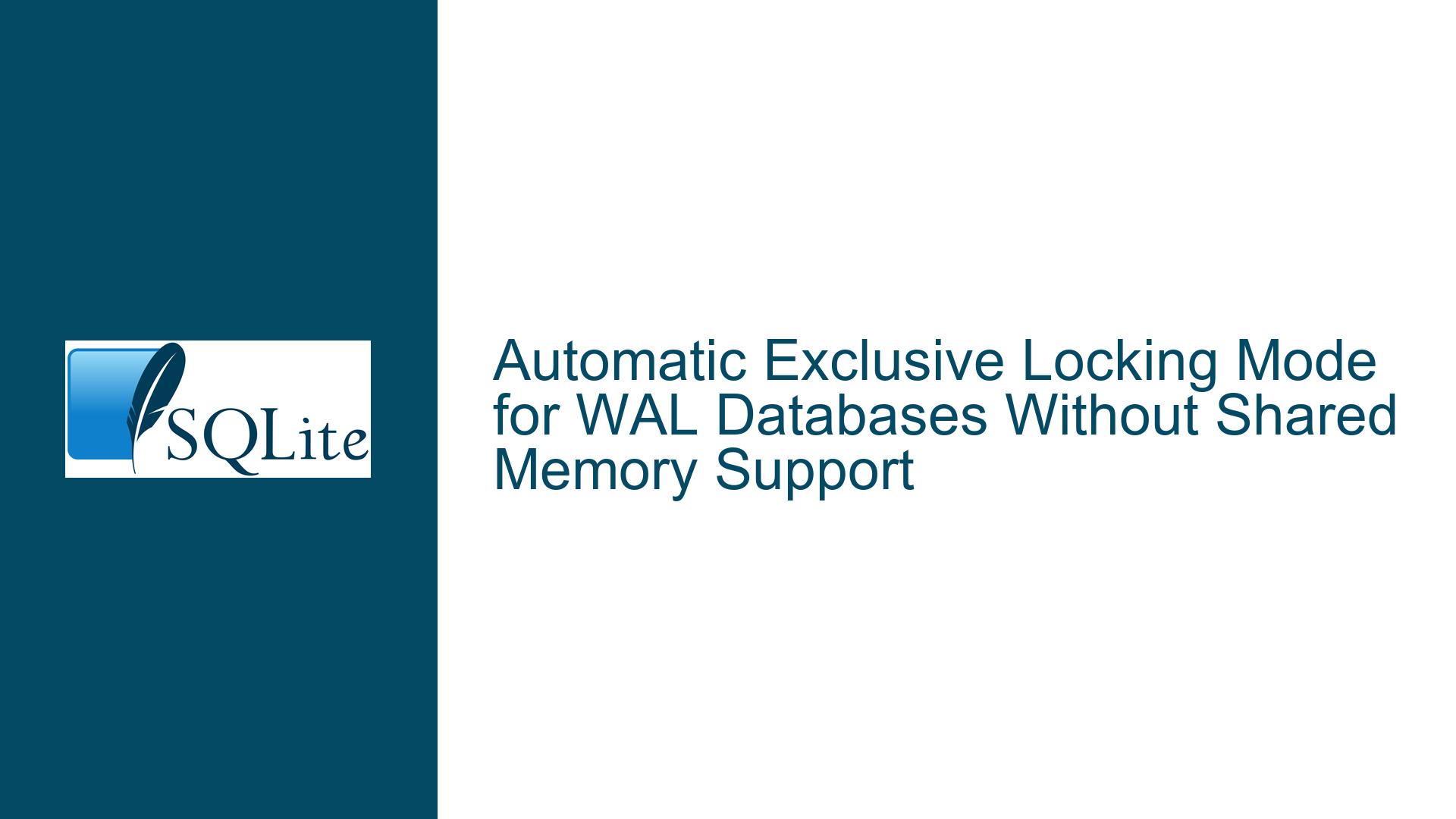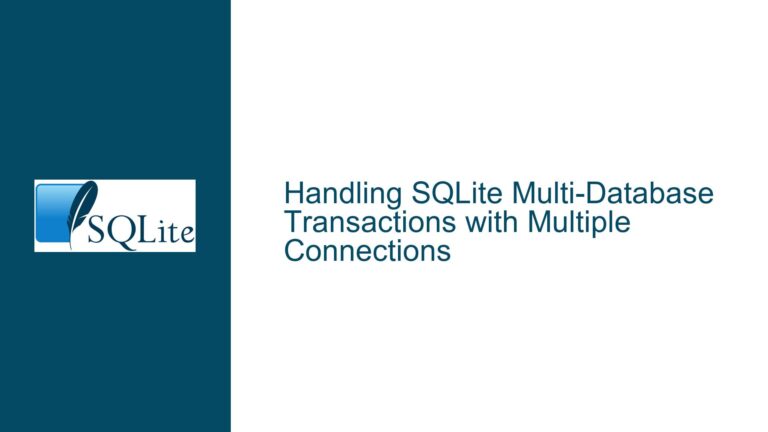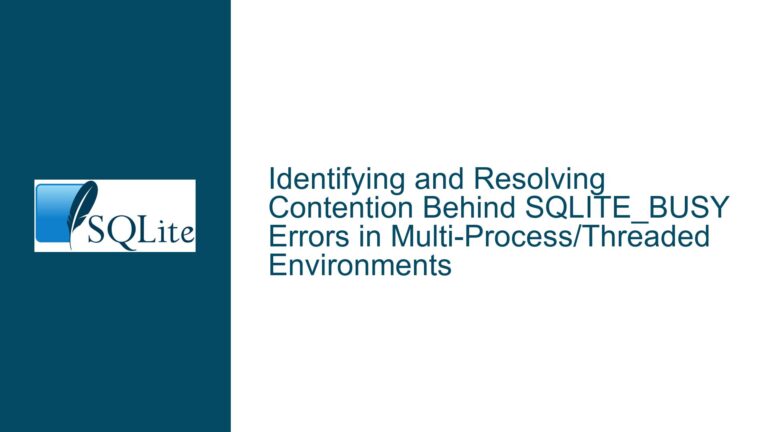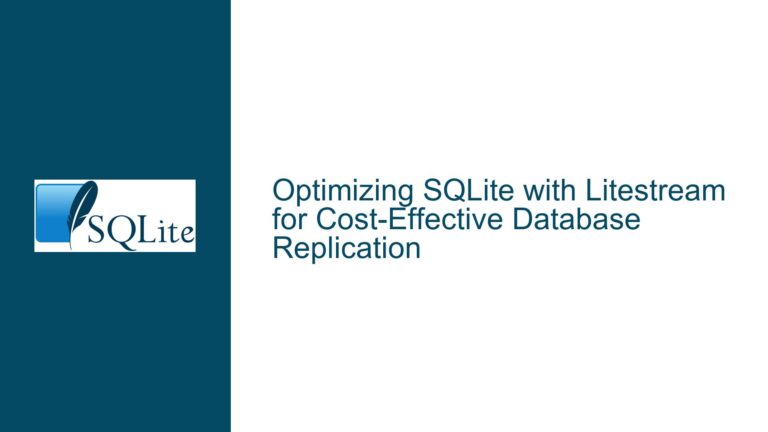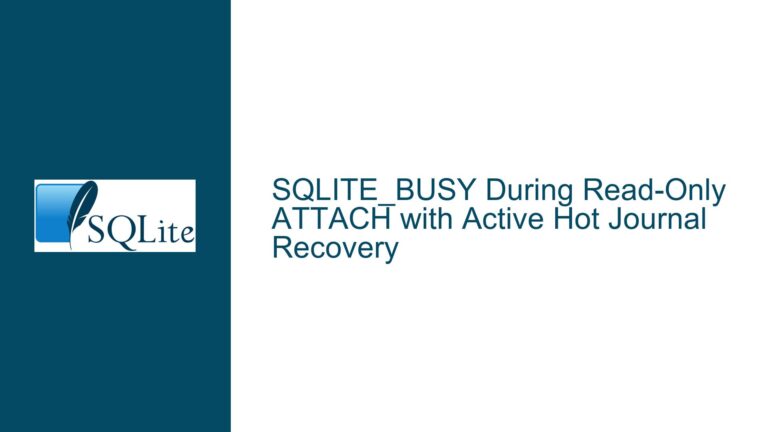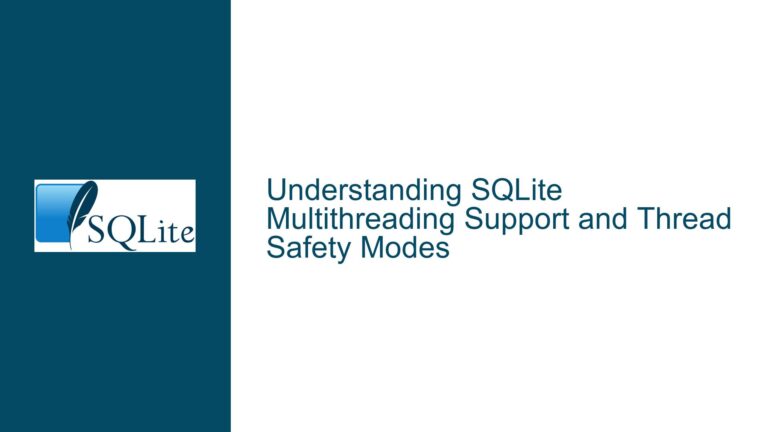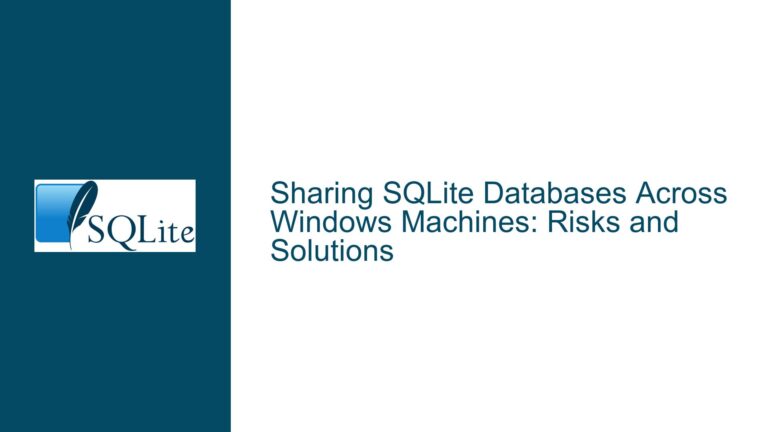Automatic Exclusive Locking Mode for WAL Databases Without Shared Memory Support
Issue Overview: WAL Mode and Shared Memory Incompatibility in SQLite
SQLite’s Write-Ahead Logging (WAL) mode is a powerful feature that enhances database performance by allowing readers and writers to operate concurrently without blocking each other. However, WAL mode relies heavily on shared memory (SHM) for its operation. Shared memory is used to coordinate between multiple database connections, ensuring consistency and isolation. When a Virtual File System (VFS) does not support shared memory, WAL mode cannot function as intended, leading to potential data corruption or runtime errors.
The core issue discussed revolves around the automatic handling of locking modes when a WAL-enabled database is opened through a VFS that lacks shared memory support. Specifically, the proposal suggests that SQLite should automatically switch to exclusive locking mode (EXCLUSIVE) in such scenarios. Exclusive locking mode ensures that only one database connection can access the database at a time, which mitigates the risks associated with the absence of shared memory.
The discussion also touches on the incompatibility between WAL mode and the nolock=1 URI parameter. The nolock=1 parameter is designed to disable file locking entirely, which is inherently unsafe in WAL mode due to its reliance on shared memory for coordination. The current implementation enforces this restriction, but questions arise about why exclusive locking mode (pPager->exclusiveMode) is not considered a viable alternative in such cases.
Possible Causes: Why WAL Mode Fails Without Shared Memory and the Role of Exclusive Locking
The failure of WAL mode in environments without shared memory support stems from its design philosophy. WAL mode uses shared memory to maintain a shared state between multiple database connections. This shared state includes the WAL index, which tracks the current state of the database and ensures that all connections see a consistent view of the data. Without shared memory, this coordination mechanism breaks down, leading to undefined behavior.
Exclusive locking mode (EXCLUSIVE) is a potential workaround for this issue. In exclusive mode, only one connection is allowed to access the database at a time. This eliminates the need for shared memory because there is no contention between multiple connections. However, exclusive locking mode comes with its own set of trade-offs. It severely limits concurrency, as only one connection can read or write to the database at any given time. This makes it unsuitable for applications that require high levels of concurrency.
The discussion also highlights the incompatibility between WAL mode and the nolock=1 URI parameter. The nolock=1 parameter disables file locking entirely, which is inherently unsafe in WAL mode. File locking is essential for coordinating access to the database, even in exclusive mode. Disabling file locking in WAL mode would lead to data corruption, as multiple connections could attempt to modify the database simultaneously without any coordination.
The question of why exclusive locking mode (pPager->exclusiveMode) is not considered a viable alternative to shared memory in WAL mode is also explored. Exclusive locking mode is inherently less dangerous than disabling file locking entirely, as it still provides a mechanism for coordinating access to the database. However, it is not a perfect solution, as it sacrifices concurrency and may not be suitable for all use cases.
Troubleshooting Steps, Solutions & Fixes: Implementing and Evaluating Exclusive Locking Mode for WAL Databases
To address the issue of WAL mode failing in environments without shared memory support, the following steps can be taken:
Automatic Switching to Exclusive Locking Mode: Implement a mechanism that automatically switches to exclusive locking mode when a WAL-enabled database is opened through a VFS that does not support shared memory. This can be achieved by modifying the SQLite source code to detect the absence of shared memory support and set the locking mode to
EXCLUSIVEaccordingly. The proposed patch by Nuno Cruces provides a starting point for this implementation.URI Parameter for Exclusive Locking Mode: Introduce a new URI parameter that allows users to explicitly request exclusive locking mode when opening a WAL-enabled database. This provides users with more control over the locking mode and allows them to opt into exclusive locking mode when they know that shared memory is not available. This approach aligns with the suggestion made by Stephan Beal in the discussion.
Handling the
nolock=1Parameter in WAL Mode: Enforce the restriction that thenolock=1parameter cannot be used in conjunction with WAL mode. This restriction is necessary to prevent data corruption and ensure the integrity of the database. The current implementation already enforces this restriction, but it is important to document this behavior clearly and provide users with alternative solutions, such as exclusive locking mode.Evaluating the Risks of Exclusive Locking Mode: Assess the risks and trade-offs associated with using exclusive locking mode in WAL mode. While exclusive locking mode mitigates the risks associated with the absence of shared memory, it also limits concurrency and may not be suitable for all use cases. It is important to carefully evaluate these trade-offs and provide users with clear guidance on when and how to use exclusive locking mode.
Testing and Validation: Thoroughly test the proposed changes to ensure that they work as intended and do not introduce new issues. This includes testing the automatic switching to exclusive locking mode, the new URI parameter, and the handling of the
nolock=1parameter. It is also important to validate the performance impact of exclusive locking mode and ensure that it meets the needs of users.Documentation and User Guidance: Provide clear and comprehensive documentation on the new features and changes. This includes documenting the automatic switching to exclusive locking mode, the new URI parameter, and the restrictions on the
nolock=1parameter. It is also important to provide users with guidance on when and how to use exclusive locking mode, as well as the potential trade-offs involved.
By following these steps, it is possible to address the issue of WAL mode failing in environments without shared memory support while minimizing the risks and trade-offs associated with exclusive locking mode. The proposed changes provide users with more control over the locking mode and ensure the integrity of the database, even in challenging environments.
